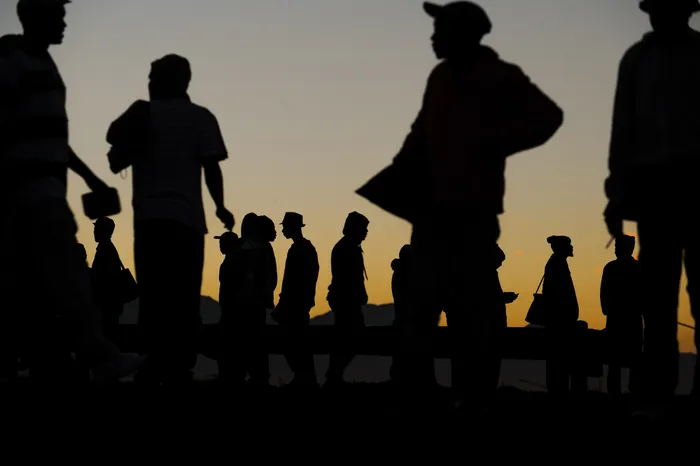South Africa's unemployment rate hits highest level in a year as jobless numbers soar
UNEMPLOYMENT

The increase in unemployment has raised concerns, with the official unemployment rate jumping by 0.3 percentage points from 32.9% in the first quarter to 33.2% in the second quarter.
Image: Henk Kruger/Independent Newspapers
The official unemployment rate in South Africa rose to its highest in one year as the jobless population surged by 140 000 in the three months to June, resulting in a total of 8.4 million individuals seeking work.
The increase in unemployment has raised concerns, with the official unemployment rate jumping by 0.3 percentage points from 32.9% in the first quarter to 33.2% in the second quarter.
This is the highest jobless rate since the second quarter of 2024.
According to the Quarterly Labour Force Survey (QLFS) results for the second quarter of 2025, the labour market showed a modest increase in employment numbers but this was coupled with a worrying rise in the unemployment rate.
Statistics South Africa said there was an increase of 19 000 employed persons, bringing the total to 16.8 million.
However, a glimmer of hope emerged as the expanded unemployment rate saw a minor decrease of 0.2 percentage points, dropping to 42.9% from the previous 43.1%.
This shift in employment dynamics contributed to an overall increment of 159 000 individuals (up 0.6%) in the labour force.
Notably, the number of discouraged job-seekers fell by 28 000 to 3.4 million, marking a 0.8% decline, while the non-economically active population—which includes those not participating in the labour market for other reasons—remained static.
Consequently, the total number of economically inactive individuals fell to 16.6 million.
FNB senior economist Thanda Sithole said the improvement in employment of 19 000 jobs aligned with expectations of further gross domestic product (GDP) growth.
However, Sithole said the persistently high unemployment rate highlighted the continued vulnerability and weakness of the labour market.
“This is further compounded by heightened uncertainty over the potential employment impact of US tariffs on sectors such as agriculture, automotive, machinery and equipment manufacturing, and mining (excluding critical minerals producers),” Sithole said.
“Over the medium term, sustained structural reforms and accelerated efforts to diversify export markets should help support job creation.”
Youth unemployment still remains critically high. The jobless rate for the 15–24 age group stood at 62.2% the second quarter, compared with 62.4% in the first quarter.
For the 25–34 age group, it was 40.5%, compared with 40.4% in the previous period. Sithole said this underscored the urgent need to accelerate pro-growth structural reforms that can drive sustainable and inclusive economic expansion.
There are also fears that the harsh tariffs imposed by the US could see a marked increase in agricultural jobs lost going forward, especially in certain sub-sectors.
Meanwhile, Stats SA said that sector-wise, formal sector employment experienced a slight gain, with an increase of 34 000 jobs, while the informal sector reported a decline of 19 000 positions in the same period.
The sectors that thrived included Trade, which alone added 88 000 jobs, followed by Private households and Construction, which each saw increases of 28 000 and 20 000, respectively.
Conversely, sectors like Community and social services, Agriculture, Finance, Transport, Utilities, and Manufacturing faced significant job losses, with the Community and social services sector alone losing 42 000 positions.
Investec economist Lara Hodes said the government needed to fix the education of the young population in a bid to address the unemployment crisis.
“Addressing the unemployment crisis remains a key imperative of government. A focus on education is critical. Indeed, those “individuals without matric recorded an unemployment rate of 39.4%” in Q2.25, according to Stats SA, “while graduates had a rate of 12.2%,” Hodes said.
“The expanded unemployment rate eased marginally to 42.9% in the second quarter, from 43.1% previously, but is a notable 13.4% points higher than the rate logged during the same period in 2008, demonstrating the extent of SA’s unemployment situation.”
BUSINESS REPORT